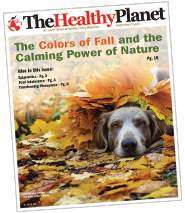Article Courtesy of Forrest Keeling Nursery
Everyone loves butterflies and other pollinators. But these winged workers are also critical to our survival. Did you know that one of every three bites of food you eat depends on a pollinator? Many farmers create special homes for pollinators near production fields.
Pollination can occur by wind or water, but the work of pollinators is the main way. Pollinators include bees, butterflies, birds, bats and other animals. Pollination is essential to 95% of all flowering plants and 1/3 of all crops grown for people, including citrus fruits, almonds, berries, cotton and milk. Even chocolate!
Pollination is the part of a plant’s life cycle required to make seed so new plants can grow. To create seeds, the plant must have pollen moved from the anther (male) to the stigma (female).
Plants attract pollinators with color, shape and fragrance to their food, called nectar. Nectar is an important source of food to fuel pollinators. When you plant for pollinators, choose a variety of species that bloom at different times of the year. This helps ensure dependable sources of nectar as pollinators breed and migrate.
- Colors like bright blue and violet attract bees. Think asters, agastache and blue sage. Hummingbirds zero in on the warm reds and pinks. Butterflies like yellow, orange, pink and red.
- Shapes are key for others. Humming- birds like tubular flowers. Cardinal flower and butterfly weed allow them to dip their tongues in for nectar. Butterflies appreciate a flat landing pad shape. Coneflowers, viburnum and blazing star allow butterflies to rest and spread their wings.
- Fragrance gains the attention of night pollinators like moths and bats. These ‘night-shift’ workers seek white and pale-colored flowers that glow in moonlight. Examples include evening primrose, garden phlox, wild hydrangea, summersweet and sweetspire.
When the pollinator takes nectar, they also pick up pollen. When the pollinator visits other flowers, the pollen drops off. Without knowing it, the pollinator has completed the important job of pollination.
Here is a list of plants for pollinators.
- aster
- agastache
- blue sage
- cardinal flower
- coneflower
- butterfly weed
- blazing star
- coneflower
- evening primrose
- garden phlox
- wild hydrangea
- viburnum
- wild hydrangea
- summersweet
- sweetspire
Forrest Keeling Nursery (www.ForrestKeeling.com) grows hundreds of native tree, shrub and perennial species that support pollinators through the year. Why not add one or more of these native species for pollinators to your landscape? For info call 800-FKN-2401.


